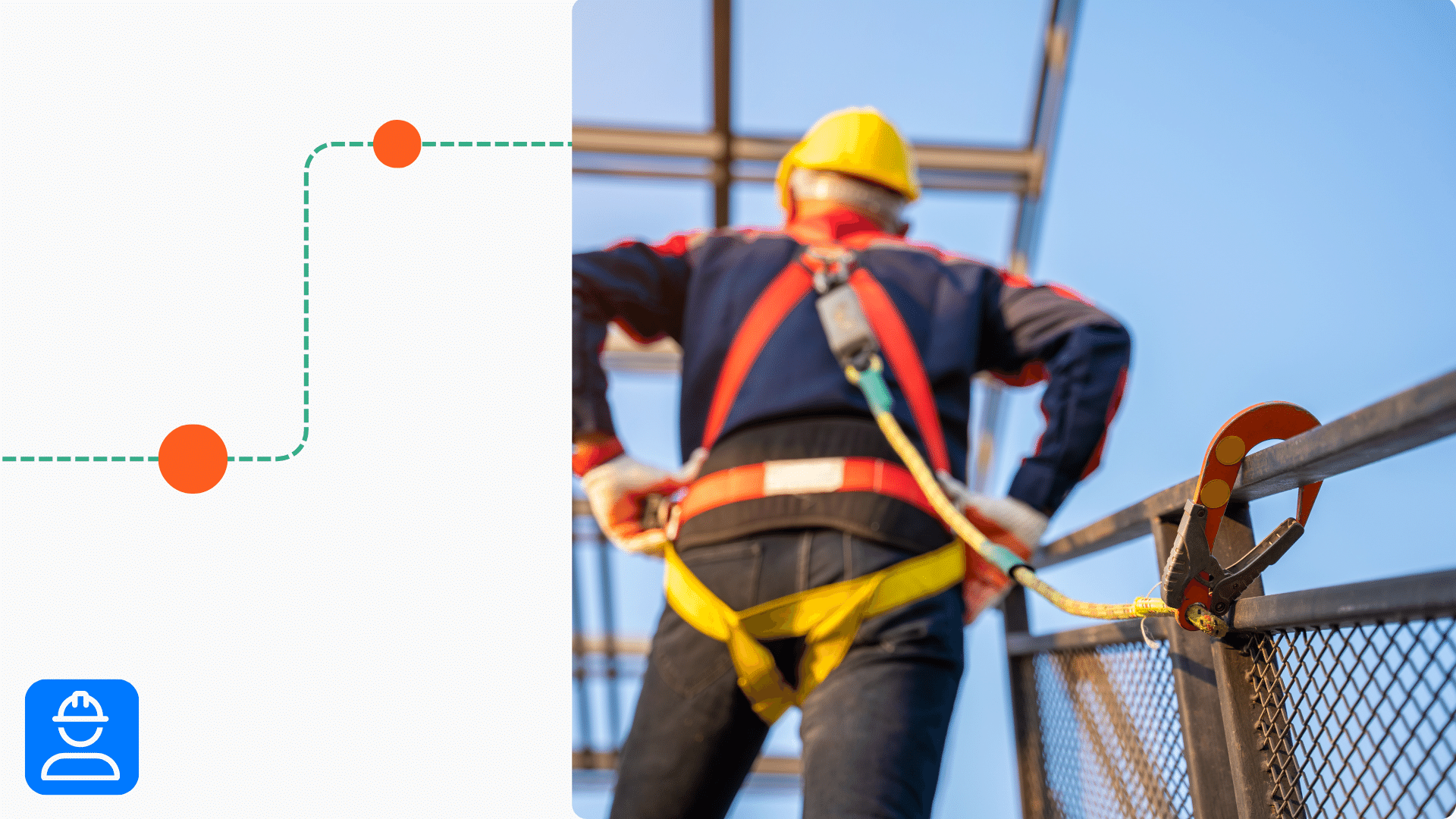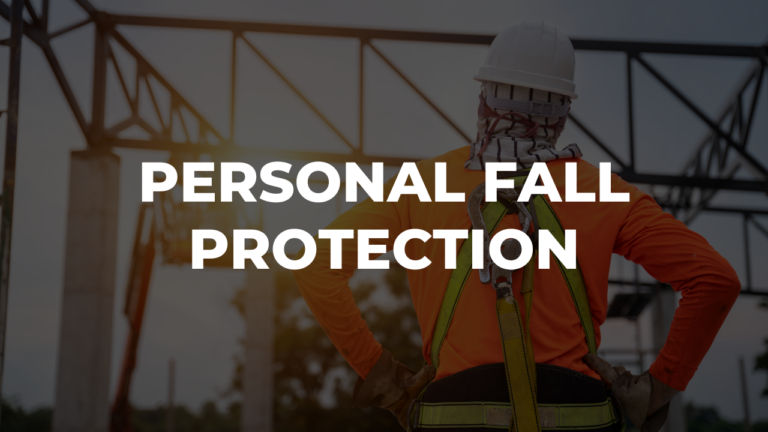Despite all their benefits, guards, harnesses, and other safety devices are only the last line of defense against fall hazards. To lower risks of fall protection failure, you need additional control measures in place. Implementing a preventative strategy, after all, is the best way to reduce incident rates and protect workers.
Free video training course!
This free training course goes over the basics of personal fall protection, what it is, and why it’s important. Understanding these basics helps mitigate the chances of protection failures.
Types of fall protection measures
Falls from heights can happen in a variety of different environments. So, it’s important to pick the protection measures that best suit your processes and worksite to avoid any potential failures in fall protection.
Personal fall arrest systems (PFAS)
Per OSHA, a personal fall arrest system is a “a system used to arrest an employee in a fall from a working level. It consists of an anchorage, connectors, a body belt or body harness and may include a lanyard, deceleration device, lifeline, or suitable combinations of these.” It’s crucial for these systems to perform effectively to prevent fall protection failure.
Guardrail systems
Install barriers and guardrails along open-edged platforms and work areas to prevent workers from falling off, thus minimizing any failure risks. You can also use guardrails around floor openings, skylights, and other areas where workers are at risk of falling.
Fall safety nets
Safety nets and crash pads are the absolute last line of reactive defense you can put in place. Their sole purpose is to reduce the severity of an injury due to a fall. Therefore, using them effectively avoids fall protection failures.
Fall protection failure modes
In general, the term “fall protection failure” refers to any situation where your control measures do not function as intended, leading to a greater risk of accidents. Therefore, understanding the different fall protection failure modes is critical for identifying weaknesses and implementing more effective safety controls.
Safety equipment malfunctions
When equipment like harnesses or lanyards don’t work properly, this constitutes a form of fall protection failure, increasing injury risks for workers. Equipment malfunctions can happen due to excessive wear and tear, product defects, or incorrect application. External variables like worksite conditions and weather can also impact the effectiveness of equipment.
Human failure
Workers are human, and they make mistakes which can lead to fall protection failures. Sometimes, employees don’t have sufficient training to use fall protection equipment. They might wear their harnesses incorrectly or forget to attach the lanyard to the anchor point. In other cases, workers may completely ignore safety protocols. Therefore, like all areas of safety performance, the human factor is real—and you must account for it.
Entire System Failures
Additionally, entire system failures often result from improper installation, poor inspection practices, or inadequate maintenance. Without regular preventative checks, these issues can create a chain reaction that leads to serious incidents. Consequently, to prevent these failures, you must look beyond the equipment itself and implement broader fall protection failure measures such as system audits, employee refresher training, and oversight procedures.
Focus on prevention of fall protection failure
In safety, the focus should always be on incident prevention, not incident management. When addressing failures, there are many controls you can implement to avoid future incidents, including:
- Schedule fall protection training refreshers throughout the year.
- Require daily fall protection equipment inspections.
- Document all maintenance activities, inspections, etc., with EHS software.
- Take a weekly inventory of all equipment.
- Implement a red tag system to decommission defective or unsafe equipment.
- Invest more money in high-quality safety gear.
- Implement a user-friendly hazard reporting process.
- Track preventative maintenance on nets, guards, barriers, anchor points, etc.
Prevention of fall protection failure comes down to two key strategies:
- Ensure that physical fall protection safety measures (guards, PFAS, etc.) are in place and working properly.
- Empower employees to recognize, report, and remove fall safety hazards wherever possible.
If you do these two things, then you should be able to drastically reduce the likelihood of fall incidents at your worksite.




